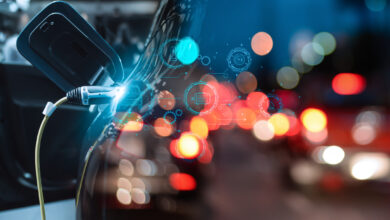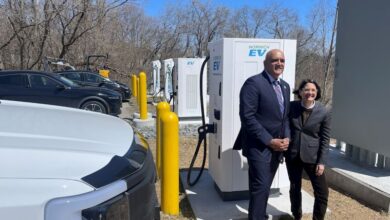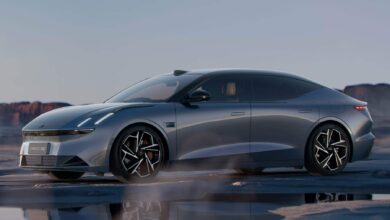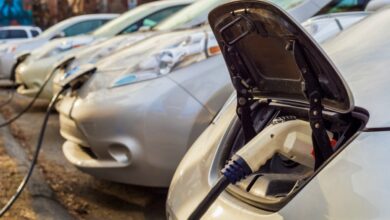Europe’s EV battery hope fades as China pulls ahead while US subsidies undermine resources

“As a European company we need to change our mindset – we are changing from teachers to become students because we have to catch up on a significant backlog of experience,” Sebastian Wolf, chief operating officer of Volkswagen’s PowerCo battery unit, said on the sidelines of a conference in Stuttgart, Germany. “We have to all focus on becoming faster and becoming more cost efficient.”
Companies may cut back more on planned factories as European Union subsidies are hard to access due to bureaucracy and carmakers protect thin EV profit margins. VW may push out reaching full capacity for its €20 billion (US$21.5 billion) battery behemoth. Automotive Cells Company, led by Stellantis and Mercedes, has put on hold two of its three sites to weigh making lower-cost cells in light of slowing demand for still-expensive EVs.
The backslide isn’t exclusive to European players with China’s Svolt Energy Technology cancelling a project in Germany because of uncertainties on subsidies and after a cornerstone customer fell away.
EV demand below expectations is raising the bar for new entrants who also face competition from leading Asian suppliers at home. China’s Contemporary Amperex Technology, the world’s biggest cell maker has a site in Germany and is adding another in Hungary, while South Korea’s LG Chem has been making batteries in Poland for about six years.
Still, European suppliers have a role to play for resilience, even as they struggle, ACC’s Chief Executive Officer Yann Vincent said. “It’s not to say that we are immediately competitive, there’s clearly an issue.”
The stakes are high: if the region fails to establish its own EV battery value-chain as cells replace the combustion engine, large parts of the automotive industry – which makes up about 7 per cent of Europe’s economy – will follow solar panels, consumer electronics and chips in shifting to Asia.
Northvolt AB, the continent’s biggest and most promising home-grown battery maker, is being buffeted by making “premium” cells amid a flood of cheaper Chinese batteries.
Meanwhile, aggressive and immediately accessible subsidies and tax breaks in the US and Canada are luring companies like Norway’s Freyr Battery to move overseas.
The European Commission and the UK have approved less than €7 billion in state aid for battery manufacturing since the start of 2022 – a fraction of the estimated US$140 billion needed to reach the target of 1.4 terawatt hours of battery-manufacturing capacity by 2030. The US will dole out an estimated US$160 billion in tax credit spending before 2029 for solar and battery cells, according to BloombergNEF. Canada committed US$25 billion in battery incentives last year, attracting investments from companies including Volkswagen and Stellantis.
“Europe really needs to wake up and provide a decent response,” Tom Einar Jensen, co-founder of Freyr Battery, said at the BloombergNEF event. “If Europe wants to move from reliance on Russian gas to reliance on only Chinese imported batteries, that probably is a discussion that needs to be more thought about in the current structure.”
The comment echoes Europe’s energy crisis that hit Germany particularly hard after the invasion of Ukraine largely cut of gas supplies from Russia.
Developing self-sufficiency will be difficult. China not only makes the most batteries but also has a deep grip on the industry’s supply chain, especially the refining of key minerals like lithium, nickel, cobalt and graphite, as well as the production of anode and cathode cell components.
So far, the bulk of Europe’s investments have been directed more toward cell manufacturing than the mining and refining industries higher up the value chain, said Ilka von Dalwigk, senior technology and policy expert at EIT InnoEnergy, a venture capital firm co-funded by the EU.
“Europe is a little bit in the dilemma in that we need to develop a completely new industrial value chain and we need to develop all parts simultaneously,” von Dalwigk said. “We need to do it quite fast if you want to secure some market shares compared to US and the Asian players.”
Without substantial support, new entrants face a bleak outlook. According to BloombergNEF, the world already has more than twice as much lithium-ion battery capacity as needed. Manufacturing capacity in China, which has doled out incentives likely totalling in the tens of billions of dollars, was already three times domestic demand last year and will rise to more than six times in 2025, if all factories planned in the country come online.
Herbert Diess, chairman of chip maker Infineon Technologies and former CEO of Volkswagen, said at the BloombergNEF event that Europe is better off focusing on complex solutions to help cars access renewable energy.
“We should do what we can do best, and we should have China making what they can do cheapest and in good quality,” Diess said.



